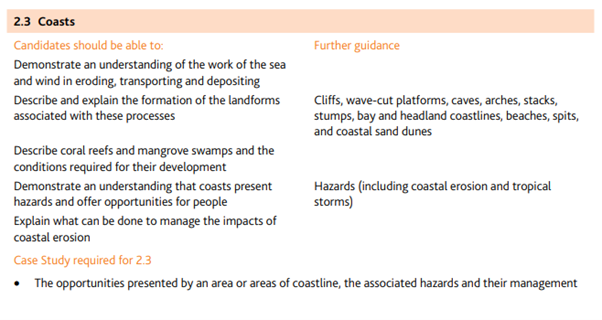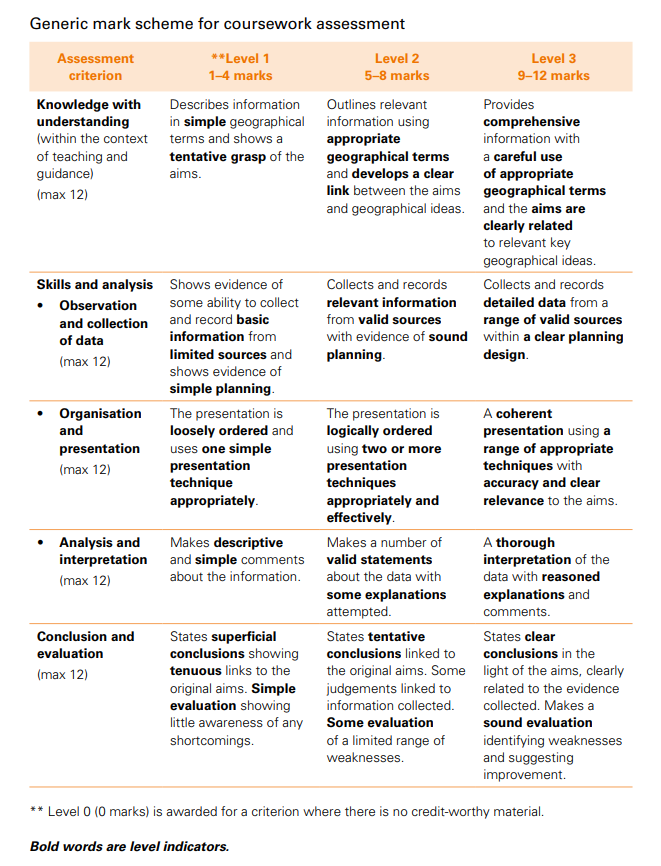How have geomorphic processes altered the coastline in Sitges &
how have people tried to manage these processes?
how have people tried to manage these processes?
Your coursework will be a written report of no more than 2000 words. It is worth up to 27.5% of your total qualification. The final version is due on Friday 4th October 2024 at 18h00.
You will hand in each chapter and receive feedback on the work but only if you meet the deadline set by Mr Podbury. All work must be uploaded to ManageBac by the deadline. Work that is late will not be considered for first draft marking and no feedback will be given.
Your IGCSE Geography coursework is essential to your qualification and aims to show that you are able to collect data, process it and then find the best way to answer your question with all the information you have gathered. This piece of work relates to the 'Natural Environments' unit of work and in particular, the section on Coasts below. It is important that you recognise that what we have studied, links to the Cambridge IGCSE Geography syllabus.
You will hand in each chapter and receive feedback on the work but only if you meet the deadline set by Mr Podbury. All work must be uploaded to ManageBac by the deadline. Work that is late will not be considered for first draft marking and no feedback will be given.
Your IGCSE Geography coursework is essential to your qualification and aims to show that you are able to collect data, process it and then find the best way to answer your question with all the information you have gathered. This piece of work relates to the 'Natural Environments' unit of work and in particular, the section on Coasts below. It is important that you recognise that what we have studied, links to the Cambridge IGCSE Geography syllabus.
How will your work be marked?
The grid below shows you how you work will be marked. It is important that you look carefully at the words in bold as they are the key criteria for getting into the higher mark bands.
Below, you will find your step-by-step instructions for completing this piece of Geography coursework. A countdown clock will appear under each 'live' deadline to remind you of when the chapter is due in. It will also appear on ManageBac.









